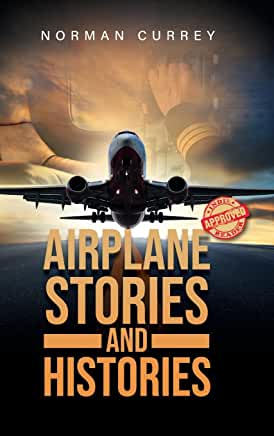Title: Airplane Stories and Histories: Volume I
Author: Norman Currey
Publisher: XlibrisUS
ISBN: 978-1-5245-7370-6
Pages: 96
Genre: History, Aviation
Reviewed by: Jason Lulos
Pacific Book Review
Airplane Stories and Histories: Volume I is a well-written, concise history of modern aviation for the general public or the specialist. Author Norman Currey is an expert in the field and in addition to this well-informed overview of the last 200 years of human flight; he corrects many misconceptions about the significant “firsts” in this area of human invention. This is a very interesting first volume.
The general reader will appreciate the human stories of this history and the lesser- known pioneers. Currey begins with Sir George Cayley, the father of aviation, who I bet many, had never heard of. Sir Cayley was a “born inventor.” He created the caterpillar tractor used in tanks in World War I, streamlined cannon balls and shocks which enhanced train safety. Of course, he also developed early designs for aircraft, which stemmed from his interest in the mechanics of bird flight. Cayley preceded the Wright Brothers by half a century and his work paved the way for their eventual success. Currey also covers the big names: the Wright Brothers, Amelia Earhart, Charles Lindbergh, and Wiley Post, but he makes it clear that there were other significant firsts.
The teams of Read/Hinton and Alcock/Brown are not nearly as well known yet are just as significant in the evolution of transatlantic flight. For example on Cayley, Currey notes this quote Wilbur Wright said (in 1909): “About 100 years ago an Englishman, Sir George Cayley, carried the science of flying from a point which it had never reached before and which it scarcely reached again during the last century.”
Currey covers an incredible number of planes in this short history, from the Wright Brothers’ biplane to the Northrop Grumman B2. In larger depth, he discusses the de Haviland DH98 Mosquito (Mossie), one of the few airplanes of its time made mostly of wood, a “fast bomber,” to the Stingray and Mustang, and a chapter on the history of Lockheed. Interestingly, some of these aircraft were made in secret, notably during wartime. The Mossie is particularly interesting in this case because it was developed in Salisbury Hall. Employees lost some of the plans in the moat while crossing its swinging rope bridge! These are the historical tidbits that made this a really interesting read.
Currey provides plenty of photographs, sketches, and schematics of these aircraft. There is an extensive bibliography specific to each chapter for readers who want to pursue more research. He also provides some maps and suppositions about Earhart’s crash – for the Amelia enthusiasts. Hopefully, more volumes will follow. This would make a great gift to aviation lovers, engineers, scientists, and historians.


